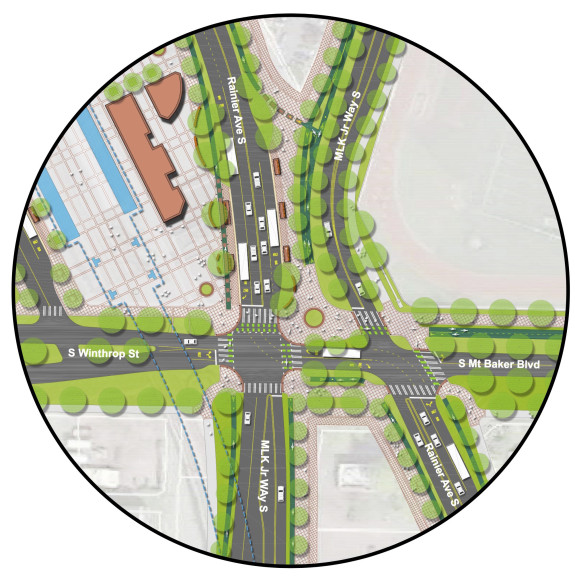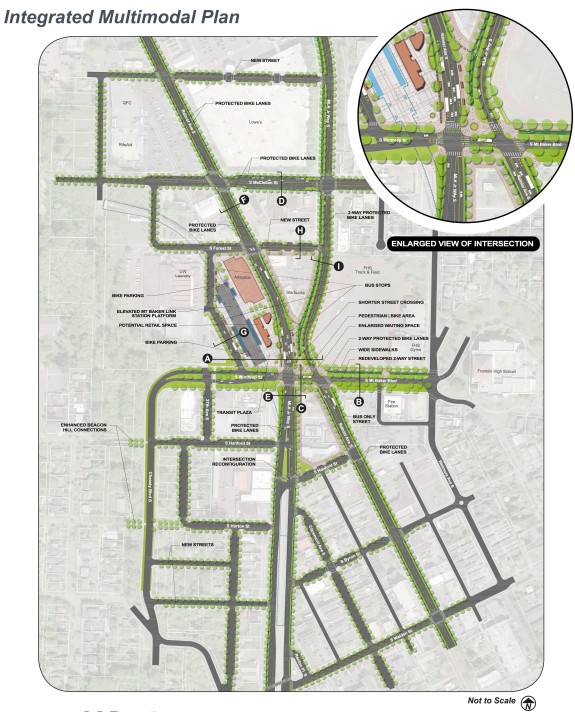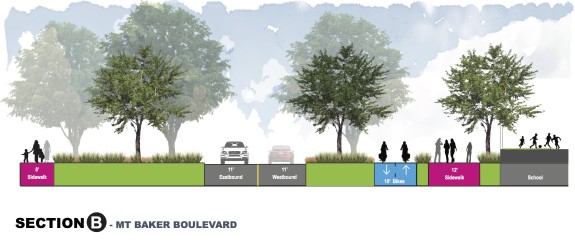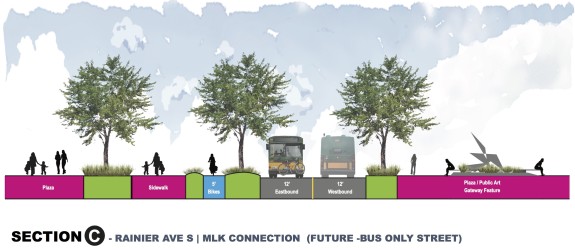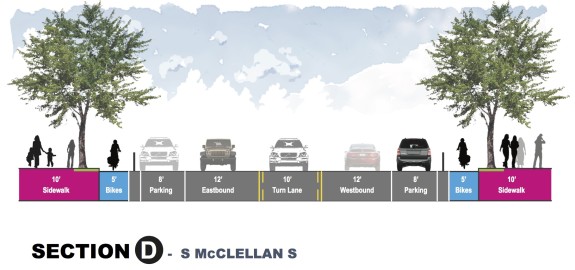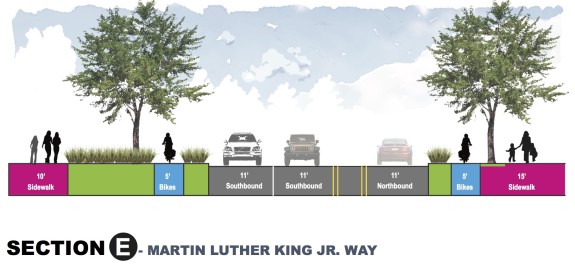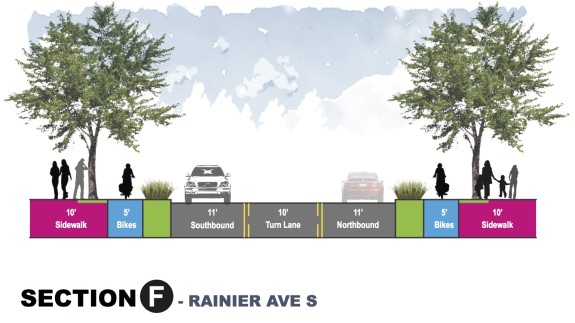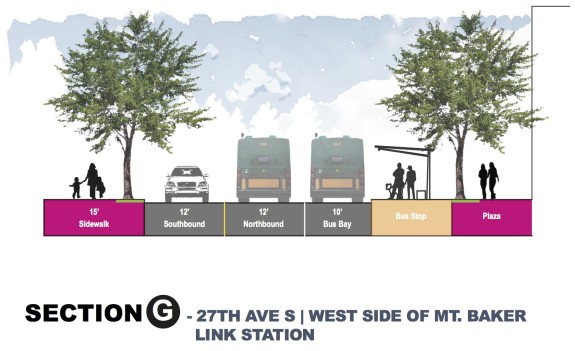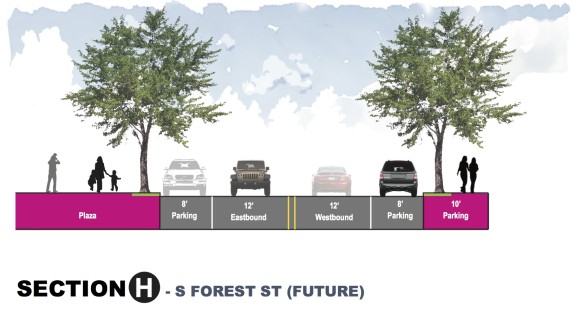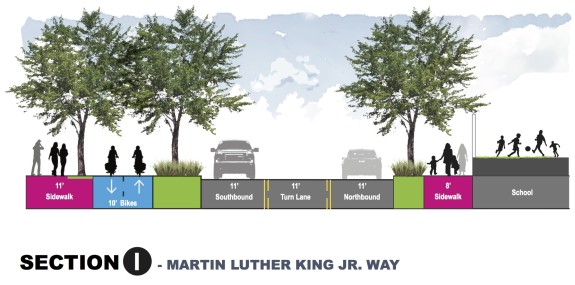Mt Baker intersection plan continues to wow + A new standard for public outreach
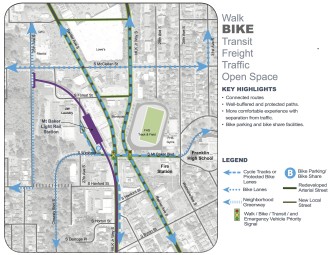
Images from the Accessible Mt Baker open house materials.
Seattle's plan to turn one of its worst intersections into one of its best just keeps getting better. With the misleadingly-boring name "Accessible Mount Baker," the project would simultaneously revolutionize non-motorized transportation in the whole Rainier Valley, prevent dozens of serious traffic injuries every year, improve general traffic flow, improve transit connections and create space for a successful neighborhood center complete with more housing, more businesses and more gathering spaces.
When you add up all the benefits, the $20-24 million price tag starts to sound like a real bargain.
Then general plan hasn't changed since our previous report, but the design concept has gotten more specific and complex traffic analyses have shown the concept can work as predicted. Also, voters passed Move Seattle, which will invest $6 million into the project.
The general idea is to uncross a crisscrossing intersection of Southeast Seattle's two major north-south streets: Rainier Ave and MLK Jr Way. Today, this intersection works horribly for everyone. The traffic volumes, turning movements and large size of the intersection require long signal cycles. Buses full of people wait, people walking wait, people driving wait and people biking, well, they're basically left to fend for themselves.
Collisions are common both at the intersection itself and at nearby intersections that are impacted by the cascading traffic headache caused by this one mega-intersection:
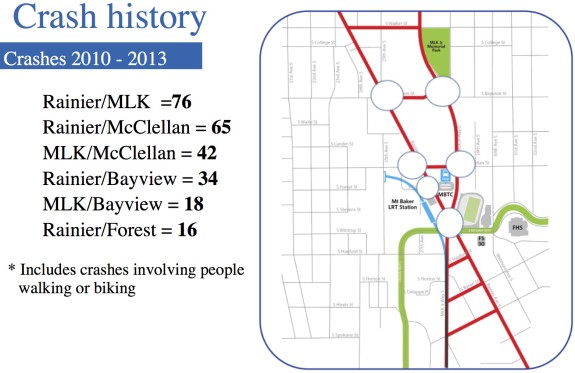 By un-crossing the intersection, all streets flow better, allowing for more human-scaled streets complete with wider walking spaces and protected bike lanes on both MLK and Rainier. It also allows for many more direct walking connections and restores the historic Olmsted boulevard connection between Mt Baker and Cheasty Boulevards.
By un-crossing the intersection, all streets flow better, allowing for more human-scaled streets complete with wider walking spaces and protected bike lanes on both MLK and Rainier. It also allows for many more direct walking connections and restores the historic Olmsted boulevard connection between Mt Baker and Cheasty Boulevards.
As for the bike connections, plans show bike lanes pretty much everywhere they need to be. That's great news, setting up a major link in the biggest non-downtown bike route gap in the city. The city already plans to study multimodal improvements to the north end of Rainier Ave, and the city should prioritize building protected bike lanes between Mt Baker and Jackson Street.
There's some work to do to on a few details, but they are basically just nitpicks this early in such an impressive concept vision. Five-foot lanes are the absolute bare minimum for bike lanes. Where possible, the city should boost them to seven feet or more, which is wide enough for people to ride side-by-side and talk or pass. And we should decide whether we want a two-way bikeway on MLK north of Mt Baker or two one-way lanes on either side of the street.
Here's how the idea is evolving (remember that this is a concept only):
A new standard for public engagementAnother interesting note about this project has nothing to do with the design at all: The multilingual outreach process is setting a new standard for transportation projects in diverse neighborhoods. Not only did the open house include live-translation tables (something, surprisingly, I don't think I've ever seen at an SDOT open house before), but the team also spent significant effort reaching out to populations less likely to show up to the department's typical open houses.
The project's "Inclusive Outreach and Public Engagement" process included extensive door-to-door business outreach and presentations to neighborhood groups. But it also utilized Public Outreach and Engagement Liason resources in the city's Department of Neighborhoods to reach three three targeted groups: Youth, East African language speakers, and East and Southeast Asian language speakers. The results of these efforts are outlined and compiled in this PDF report.
The report also suggests that Seattle's biking efforts may not be reaching these three populations well, either. If the small focus groups are representative of each population, rates of biking and interest in bike lanes are lower than the general feedback received. Rainier Valley Greenways has worked to get some materials translated, but it's a lot of work (and pricey) to fully integrate multilingual efforts into advocacy work. As the safe streets movement grows, this work only gets more important.
